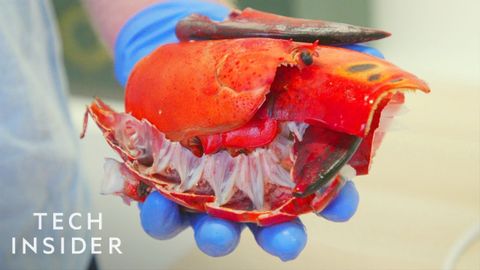いろんな意味で気になる!ロブスターのプラスチック (How Lobster Shells Could Replace Single-Use Plastic)
Liang Chen が 2019 年 06 月 03 日 に投稿  この条件に一致する単語はありません
この条件に一致する単語はありませんUS /məˈtɪriəl/
・
UK /məˈtɪəriəl/
- n. (c./u.)衣料;原材料;原料
- adj.関連な,重要な;世俗的な : 物質的な : 物質でできた
US /kəmˈpɛlɪŋ/
・
UK /kəmˈpelɪŋ/
US /pəˈtɛnʃəlɪ/
・
UK /pə'tenʃəlɪ/
エネルギーを使用
すべての単語を解除
発音・解説・フィルター機能を解除
